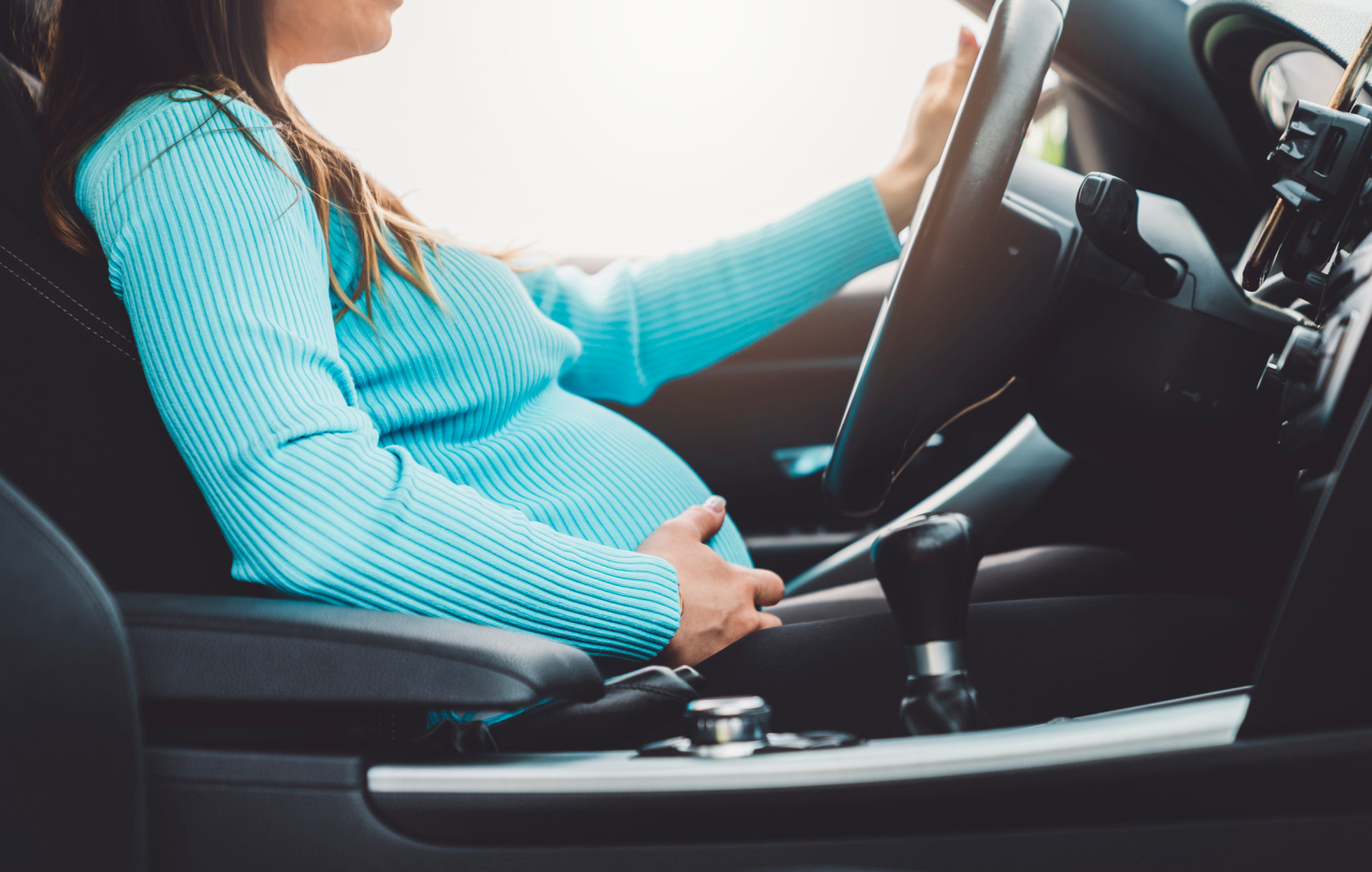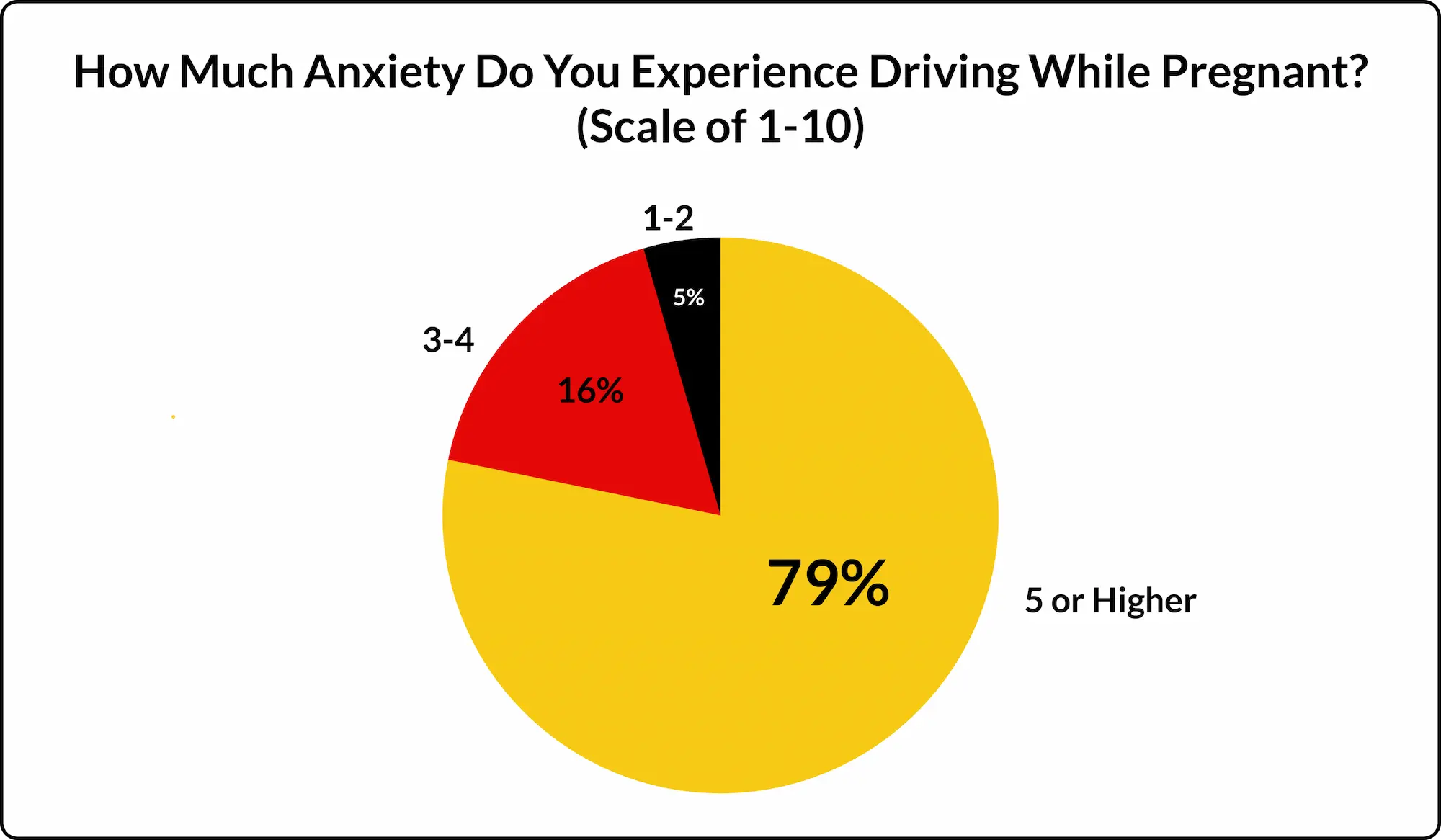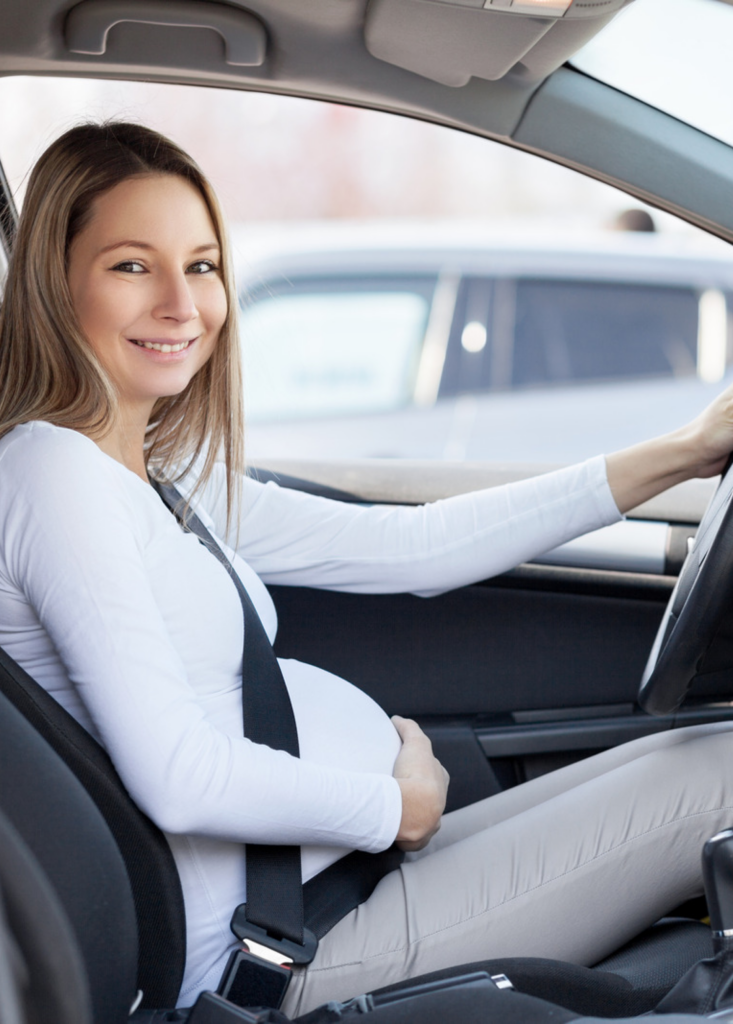Driving While Pregnant
While it is generally safe to drive while pregnant, there are instances when pregnant women should be more cautious. Women who are expecting sometimes feel nauseated and fatigued or find it difficult to maneuver a vehicle. When these challenges affect driving, it can create hazardous situations for the mother and other drivers on the road. Cooper Hurley Injury Lawyers share important details you should know about driving while pregnant.

Driving during pregnancy is generally safe for most women. However, many expecting mothers find driving difficult due to medical reasons, chronic fatigue, or severe nausea. Others struggle with sitting in the same position for long periods and feel uncomfortable in the driver’s seat. In the later months of pregnancy, some women may have trouble reaching the steering wheel or gear shift to maneuver the vehicle safely.
Although most expectant women can drive throughout their pregnancy, it’s essential to talk to your doctor about any challenges you face and recognize when it might be unsafe. The car accident attorneys at Cooper Hurley Injury Lawyers share crucial information about driving while pregnant.
Survey Results: Understanding the Concerns of Pregnant Drivers
To better understand the challenges pregnant individuals face while driving, we conducted a survey of 100 pregnant participants. The goal was to assess their concerns about driving safety and the availability of pregnancy-specific information. The results reveal key insights into both the emotional and physical difficulties faced by expectant mothers on the road.
Are Pregnant Moms Getting the Information They Need for Safe Driving?
A significant finding from our survey is the dissatisfaction with the availability of pregnancy-specific driving safety information. Only 57% of respondents felt very satisfied or satisfied with the resources available. This highlights a critical gap in information, leaving many pregnant drivers uncertain about how to drive safely during pregnancy. This gap emphasizes the need for clearer, more accessible resources to help expectant mothers navigate the road safely.

Only
57%
of respondents felt very satisfied or satisfied with the resources available
Driving Challenges Significantly Contribute to Stress Levels During Pregnancy
Our survey found that 79% of participants rated their anxiety or mental distress about driving while pregnant as 5 or higher on a scale of 1 to 10. This indicates that most expectant mothers experience moderate to high levels of stress when driving. Factors such as concerns about their health, the baby’s safety, and physical discomfort contribute to this anxiety.
Elevated stress levels can be harmful during pregnancy, potentially leading to complications. High anxiety can also impair cognitive function, making it more difficult to stay alert while driving. These results underscore the importance of addressing the mental and emotional well-being of pregnant drivers to ensure safer and less stressful driving experiences.

53%
of respondents reported driving while pregnant as challenging
Physical Difficulties Behind the Wheel
Pregnancy brings physical changes that can make driving more challenging. The survey revealed that 53% of respondents reported driving while pregnant as challenging due to issues such as swollen feet, shortness of breath, dizziness, nausea, and general discomfort. These physical challenges can affect not only comfort but also safety, as they may impact the driver’s ability to maintain full control of the vehicle. It’s crucial for expectant mothers to have access to resources and advice on managing these challenges while driving.
Valuable Safety Features for Expectant Mothers
Expectant mothers also recognize the importance of certain vehicle safety features that make driving safer and more comfortable during pregnancy. Here’s a breakdown of the most valued features:

- Seatbelt Adjusters (74%): These adjusters help ensure a proper fit, improving comfort and safety during a potential collision.
- Blind-Spot Monitoring (68%): This feature provides additional awareness and helps prevent accidents by alerting drivers to vehicles in their blind spots.
- Advanced Airbag Systems (67%): Adjusting airbag force based on seat position provides better protection for pregnant drivers.
- Rearview Cameras (58%): This feature enhances visibility while reversing, reducing the risk of accidents in tight spaces.
- Lane Departure Warning (41%): This system helps prevent unintentional lane drifts, especially when fatigue or discomfort may make it harder to stay centered.
These results highlight that pregnant drivers prioritize features that improve visibility, comfort, and collision avoidance, ensuring they can drive with greater confidence and safety.
The survey results reveal that driving while pregnant involves navigating a range of physical, emotional, and informational challenges. By addressing the information gap, supporting mental well-being, and informing about valuable safety features, we hope to help expectant mothers drive more safely and comfortably.
When Can I Drive During Pregnancy?
As long as you feel comfortable and confident while operating a motor vehicle, you can continue to drive while pregnant. There are no specific laws that restrict pregnant women from driving. Expecting mothers can continue driving a car until the baby is born if they have no reason to stop.

When Should I Stop Driving?
It’s vital to listen to your body and talk to your doctor if you’re experiencing any struggles while driving during pregnancy. If the pregnancy makes driving difficult, it may be time to consider taking a back seat. Pay attention to risk factors that can make driving unsafe, including:
- Comfort levels: If you’re struggling to reach the steering wheel, wear the seat belt correctly, or sit comfortably in the driver’s seat, it could affect your driving and focus.
- Nausea: Many pregnant women experience nausea at some point during their pregnancy. However, others feel it more intensely or get motion sickness from driving. For these mothers, driving may be dangerous.
- Fatigue: Hormonal shifts during pregnancy often cause expectant mothers to feel more tired than usual. Getting behind the wheel of a car while experiencing pregnancy fatigue can put you and your baby at risk of a car accident.
High blood pressure: Gestational hypertension, or high blood pressure during pregnancy, appears in many expectant women—even mothers with no history of high blood pressure. If driving raises blood pressure for a woman with gestational hypertension, it can be dangerous for both mother and baby
Driving Tips for Long Drives and Road Trips
For pregnant women, a long commute to work or a road trip to visit family or friends can be challenging. However, making long trips while pregnant is perfectly safe if you take extra precautions and plan ahead. Some things you can do to stay comfortable and safe include:
- Letting others know your plans: Sharing your plans with family and loved ones means someone will know where you are during your trip. They should know when you will arrive at your destination and know who to contact if they don’t hear from you.
- Preparing for emergencies: If something does happen during your long drive, being prepared can make all the difference. Have your insurance information and important contact information readily available.
- Pulling over safely: Be sure to pull over at appropriate rest stops that are well-lit and labeled. Also, don’t leave your car while on a highway or high-traffic road.
- Planning for frequent breaks: Even if you think you feel fine to keep driving, it’s best to take a break, stretch your legs, and use the restroom when possible. Taking a break from driving can also combat fatigue or nausea.
Bringing food and drinks: It is common to feel hungry and thirsty during pregnancy at times that you normally wouldn’t. Also, if you have gestational diabetes, you must have a healthy snack at certain times. Bring food and drinks with you so you know you have something on hand if you get a craving.
- Wearing comfortable clothes: To help you stay comfortable during long drives, start with what you wear. Choose maternity clothes that are loose, casual, and familiar, which won’t bother or distract you while driving.
When Can I Drive During Pregnancy?
Now that you’re expecting, you must make a few adjustments to stay healthy throughout your pregnancy. Driving is no exception. There are safety tips and best practices to follow that will keep you and others safe on the road.
-
Don’t be afraid to be a passenger if someone else is willing to drive
There’s no reason to force yourself to drive if you don’t have to. You have nothing to prove by driving during pregnancy, especially if you feel tired, nauseated, or in pain. If somebody else is willing to take the wheel, allow yourself to accept help. -
Buckle your seat belt correctly
You should always wear your seat belt correctly, pregnant or not. Although it might be tempting to tuck the belt behind your back or skip it altogether in the name of comfort, the results can be fatal if you’re involved in a collision. -
Check your medication
If you’re taking any medication during pregnancy, check for side effects that could impair your driving ability. Ask your doctor if operating a vehicle while on your medication is safe, and follow their recommendations. -
Adjust your seat position
As your body changes during pregnancy, you may need to adjust your seat, steering wheel, or seat belt. Assess your comfort level and ability to move and adjust as needed before hitting the road. -
Remove distractions
Due to fluctuating hormones during pregnancy, many expecting mothers experience forgetfulness, inability to focus, and general absentmindedness. Keeping your cell phone and other distractions out of reach while driving can help you focus on the task at hand.

How to Wear a Seat Belt While Pregnant
Wearing your seat belt correctly during pregnancy can prevent injuries to you and your baby if you happen to be involved in a car accident. According to the National Highway Traffic Safety Administration, pregnant women should position the lap belt as far under the belly as possible rather than straight across it. The belt should be pulled snuggly against the hips and pelvic bone to hold your body securely in place.
The shoulder belt should sit on your shoulder and run across the middle of your chest, away from your neck. Do not place it under your arm or behind you while driving. You may also need to adjust your seat to minimize gaps between your shoulder and the seat belt and provide as much distance as possible between the steering wheel and your belly.
Even if you’re not driving and are in the passenger or back seat, you should always wear your seat belt in the correct position while the car is moving. Although you might be slightly uncomfortable during the ride, the protection the seat belt provides you and your baby far outweighs any temporary discomfort.
If You Are in a Car Accident While Pregnant
A study published in the Canadian Medical Association Journal found that pregnant women were substantially more likely to be involved in a car crash during their second trimester when compared to those who were not pregnant. The five-year study results show that the crash rate of test subjects in their second trimester increased by 42 percent from the pre-pregnancy rate.
Because of the forceful movements and impacts a car accident causes, pregnant women can suffer different types of injuries, including:
- Pre-term labor
- Hemorrhaging
- Placental abruption
- Internal bleeding
- Miscarriage
- Birth complications
If you are involved in a car accident while pregnant, taking the right steps to ensure your health and safety is crucial. Here are a few things to keep in mind after a crash:
Take a deep breath: After the collision, take a moment to calm yourself and scan for injuries before doing anything else. It won’t help to panic or become aggravated by the situation.
Get medical attention: Even if you feel fine at the moment, it’s always best to seek assistance from a health care professional after a serious car accident. You or the baby may have injuries that need immediate treatment to prevent further damage. Call 911 or have your loved one take you to the hospital.
Follow all medical advice: Listen to your doctor and follow all treatment recommendations. Attend your follow-up appointments and share any concerns you have or changes you experience.
Exchange insurance and contact information with the other driver, even if the crash was a minor fender bender or low-impact accident in a parking lot. You or another person with you can call the police to report the accident so there is official documentation of the collision. Also, consider speaking with an experienced car accident attorney if you want to take legal action and claim compensation for damages. However, your health and prompt medical care should always be the priority.
Driving After Giving Birth
The postpartum period is a special time for mothers and their families. It allows new mothers to bond with their babies and recuperate from the delivery. How long it takes for a woman to physically recover after giving birth will depend on several factors, including the type of delivery and if it was a difficult birth.
Women who had a normal vaginal birth may need a couple of weeks to recover before getting behind the wheel again. New mothers typically experience abdominal pain, vaginal soreness, and bleeding after a vaginal delivery, making driving uncomfortable. However, women can sometimes tolerate a short drive after about two weeks.
If you had a Cesarean section, it could take a little longer for you to feel comfortable driving. A C-section is considered major surgery and requires several weeks of no lifting or heavy movement to allow the incision and body to heal. While most doctors caution against driving for at least six weeks, every pregnancy and delivery is unique. Discuss your concerns with your doctor to determine the appropriate timeframe.
Car Seats
Another factor to consider when driving after giving birth is the car seat. According to the National Highway Traffic Safety Administration, newborns and infants should be in a rear-facing car seat. Be sure to purchase the right car seat for your baby and install it a few weeks before your due date. This way, it will already be set up when it’s time to head home from the hospital after delivery.
Whether you had a vaginal delivery or C-section, car seats are typically too heavy to carry for new mothers. You will likely need help for the first few weeks to get the baby to and from the car. However, there are strollers specifically designed to hold a car seat safely, which makes it easier to move the baby around if you have doctor’s appointments or other engagements to attend. Remember to be patient with your body and listen to your doctor’s advice on heavy lifting after giving birth.
